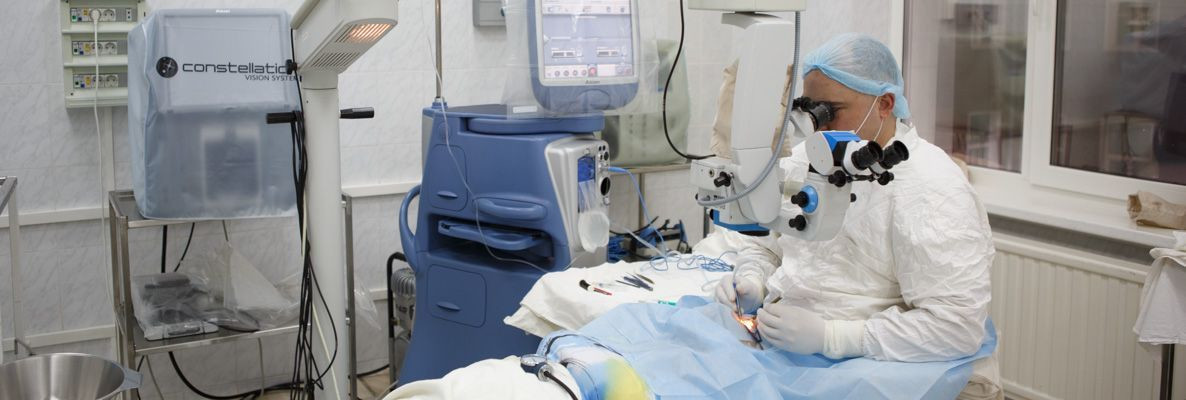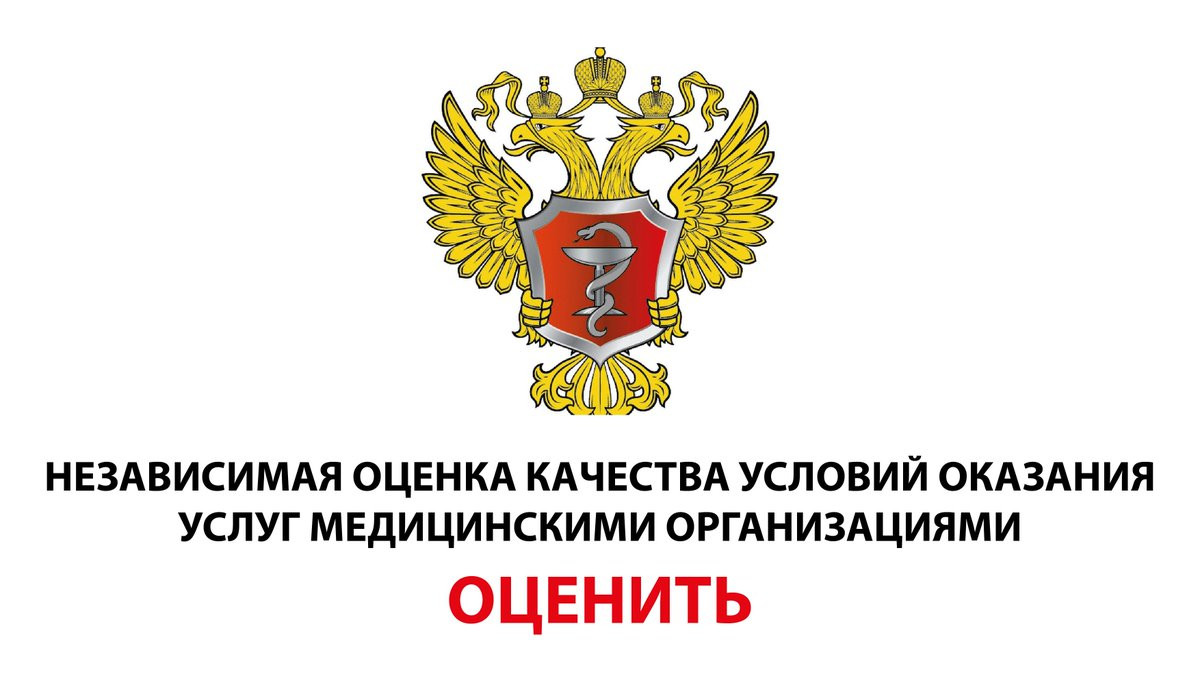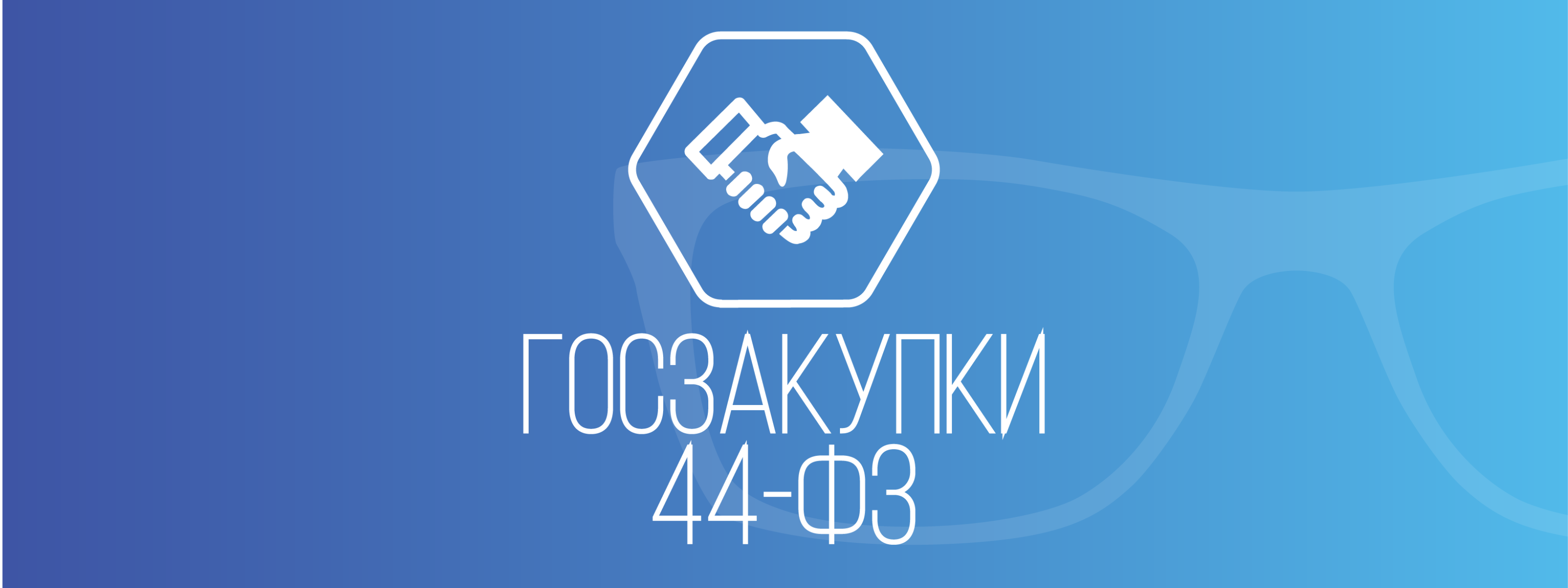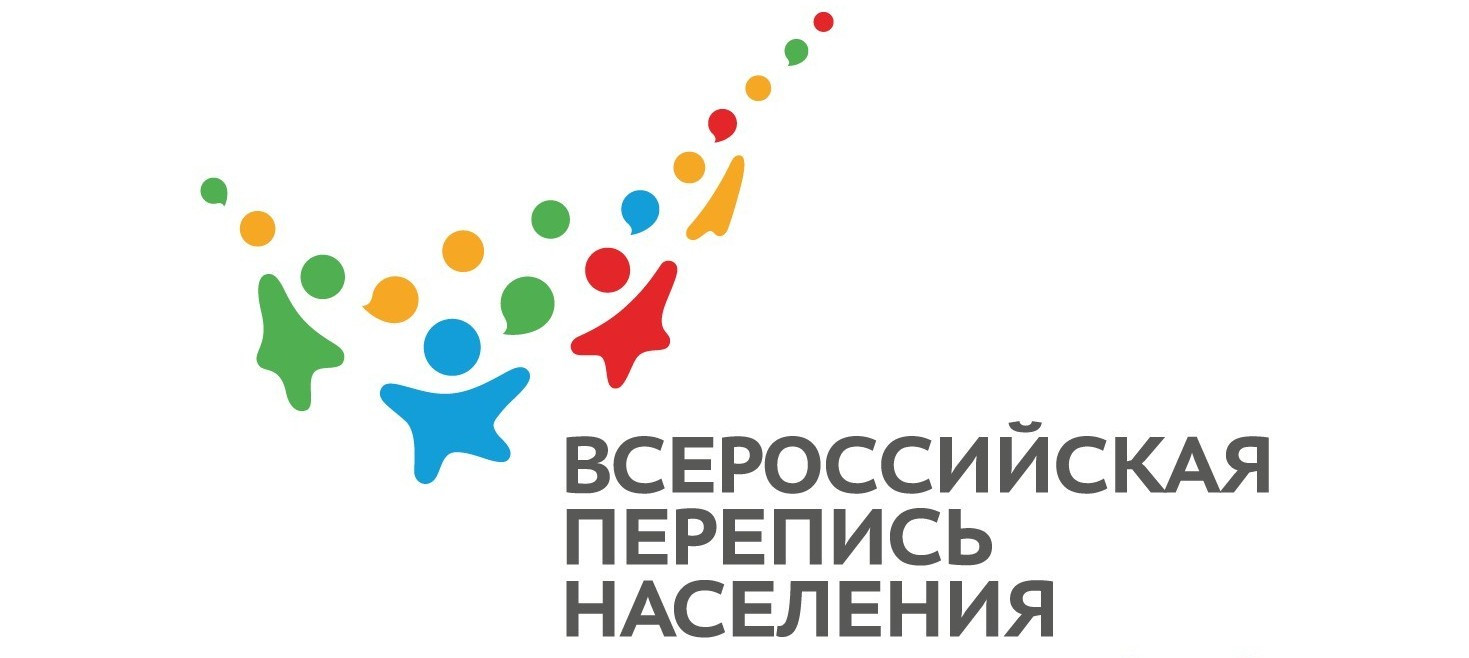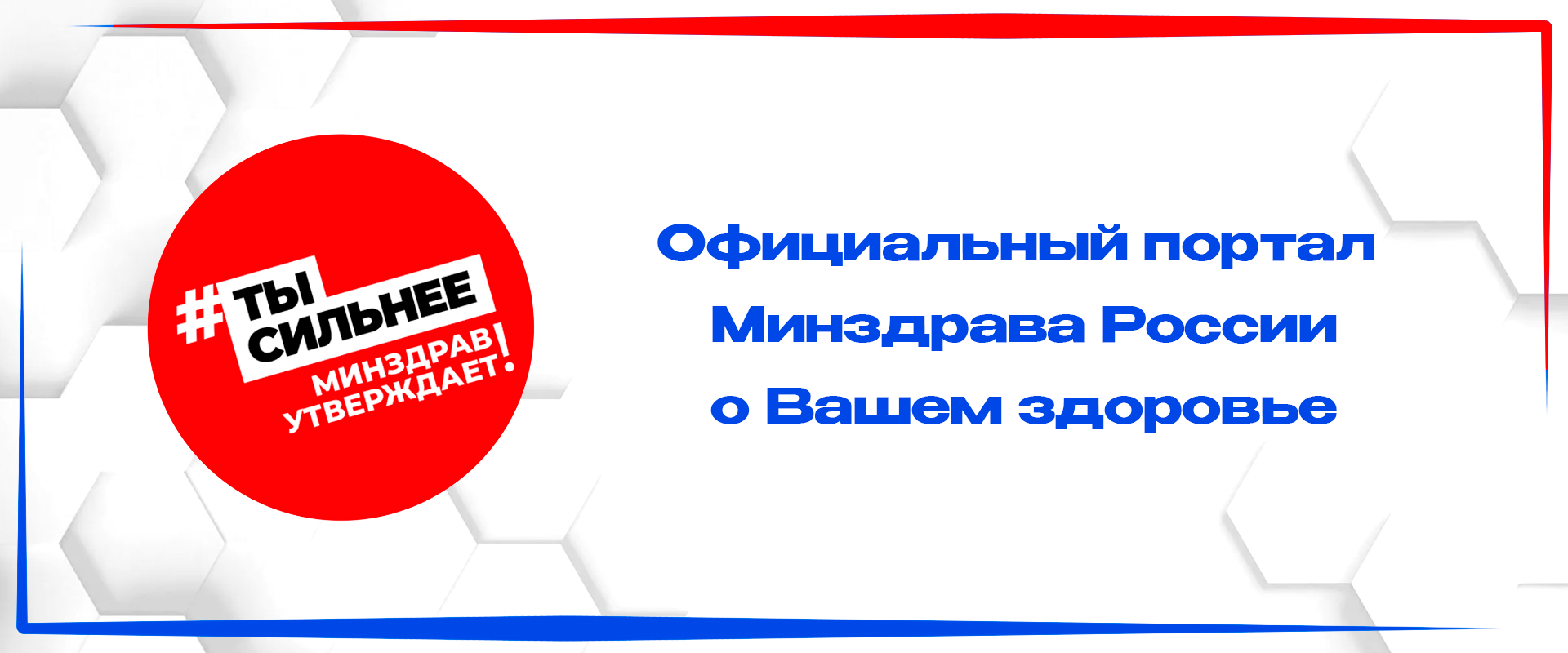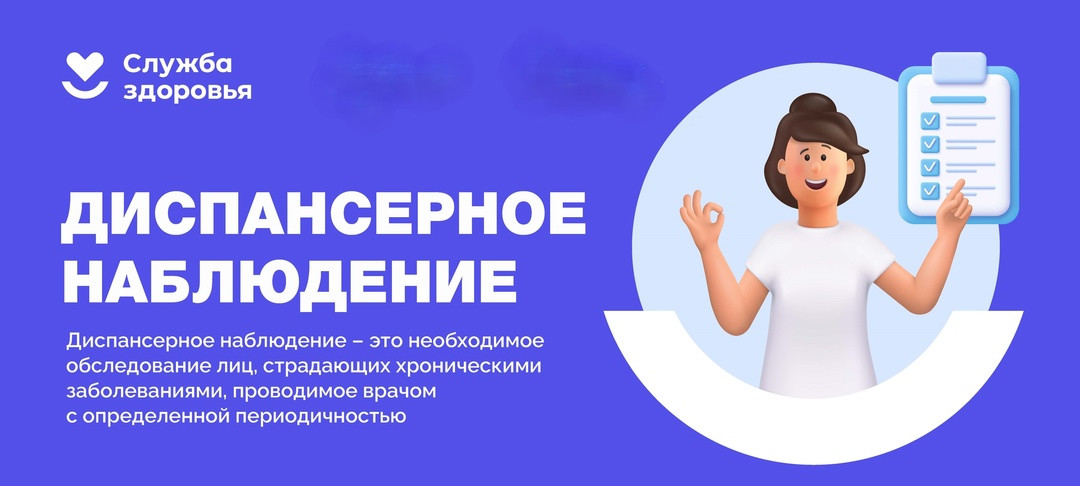Лихванцева В.Г., д.м.н., профессор кафедры офтальмологии ФФМ МГУ им. М.В. Ломоносова1;
Коростелёва Е.В., врач-офтальмолог2;
Руденко Е.А., врач-офтальмолог2;
Выгодин В.А., заведующий отделом современных методов статистического анализа3.
1ФФМ МГУ им. М.В. Ломоносова, кафедра офтальмологии, Российская Федерация, Москва, 119192, Ломоносовский просп., 31, корп. 5;
2ГБУ РО «КБ им. Н.А. Семашко», Российская Федерация, Рязань, 390005, ул. Семашко, 3;
3ФГБУ «ГНИЦ профилактической медицины» Министерства здравоохранения РФ, Российская Федерация, Москва, 101990, Петроверигский пер., 10.
ЦЕЛЬ. Изучить роль аутоиммунного воспаления орбиты в развитии офтальмогипертензии у больных эндокринной офтальмопатией (ЭОП) и болезнью Грейвса (БГ).
МЕТОДЫ. Обследованы 317 пациентов с БГ и ЭОП. Всем пациентам проводили эндокринологическое и офтальмологическое исследование. Офтальмологическое исследование включало визометрию, периметрию, тонометрию, офтальмоскопию, экзофтальмометрию. Структуры орбиты изучали с помощью мультиспиральной компьютерной томографии. Эндокринологическое исследование включало определение уровня тиреоидных гормонов (св.Т4, св.Т3), ТТГ, показателей антител к рТТГ, эхографическое исследование щитовидной железы.
Исследования проводили в динамике на протяжении 1 года наблюдения на фоне лечения заболевания щитовидной железы (хирургическое лечение и радиойодтерапия) и эндокринной офтальмопатии (38 человек, 76 глаз).
Мониторинг проводили каждые 6 месяцев/или при необходимости (в случае высоко активных, быстро прогрессирующих форм ЭОП).
РЕЗУЛЬТАТЫ. Исследование с балльной оценкой степени активности заболевания у пациентов с ЭОП позволило выявить тесную прямую высоко достоверную связь между офтальмотонусом и показателем активности воспаления. Чем сильнее было воспаление орбиты, тем выше было ВГД. Анализ частоты распределения различных показателей ВГД в группах пациентов со слабо-, умеренно- и высокоактивными формами ЭОП показал, что достоверно реже офтальмогипертензия развивается на глазах со слабоактивным воспалением, нежели высокоактивным (для сравнения: 3,3 против 50%, р<0,001). Иными словами, половина глаз с высокоактивными формами ЭОП имели офтальмогипертензию (≥25 мм рт.ст.) на нулевом визите. В целом группа офтальмогипертензии была представлена 86,1% лиц с активностью воспаления орбиты ≥3 баллов по шкале CAS.
Терапия глюкокортикоидами приводила к достоверному снижению офтальмотонуса. Максимальный лечебный эффект достигался при сочетании внутривенной пульсотерапии и ретробульбарных инъекций.
ЗАКЛЮЧЕНИЕ. Прослежена прямая высоко достоверная связь между офтальмотонусом и показателем активности воспаления; чем сильнее воспаление в орбите, тем выше офтальмотонус. Лечение эндокринного заболевания сопровождалось снижением активности воспаления в орбите и гипотензивным эффектом.
КЛЮЧЕВЫЕ СЛОВА: офтальмотонус, эндокринная офтальмопатия, болезнь Грейвса, аутоиммунное воспаление.
The study of autoimmune orbital inflammation role in the development of ocular hypertension
PURPOSE: To study the role of autoimmune inflammation of the orbit in the development of ocular hypertension in patients with endocrine ophthalmopathy (EOP) and Graves' disease (GD).
METHODS: 317 patients with GD and EOP were included in the study. All patients underwent endocrine and ophthalmological examination. Ophthalmologic study included visometry, perimetry, tonometry, ophthalmoscopy and exophthalmometry. Orbit structure was examined with the help of multispiral computed tomography. Endocrinological study combined measuring the levels of thyroid hormones, TSH and rTSH antibodies with thyroid ultrasound.
The dynamic study was carried out during a one-year period of thyroid diseases (surgical and radioiodine therapy) and endocrine ophthalmopathy (38 patients, 76 eyes) treatment.
Patients were monitored every 6 months or more often in cases of necessity (in patients with a highly active progressive ophthalmopathy).
RESULTS: The disease activity score estimation in patients with ophthalmopathy revealed a close, direct and statistically significant connection between the ocular tonus and the inflammation activity index. The orbital inflammation activity had a direct correlation with the level of IOP. The distribution frequency analysis of different IOP indices in patient groups with low-, moderate-, and highly active forms of EOP showed that ocular hypertension develops more rarely in patients with low inflammation activity than in patients with a highly active inflammatory process (e.g. 3,3% versus 50%, p <0.001). In other words, half of the eyes with highly active forms of EOP had ocular hypertension (>25.0 mm Hg) on the first visit. In general, the ocular hypertension group was represented by 86,1% patients with orbital inflammation clinical activity score (CAS)≥3.
The treatment with glucocorticoids led to a reliable decrease in the ocular tonus. Maximum therapeutic effect was achieved by a combination of intravenous pulse therapy and retrobulbar injections.
CONCLUSION: A statistically significant direct correlation was revealed between the ocular tonus and inflammatory activity index. The endocrine disease treatment resulted in both the decrease in inflammatory activity in the orbit and a hypotensive effect.
KEYWORDS: ocular tonus, endocrine ophthalmopathy, Grave's disease, autoimmune inflammation.
As is well-known, intraocular pressure (IOP) consistency is provided by central and local regulatory mechanisms. Studies of G.E. Danilov et al are addressed to central mechanisms of IOP regulation [1]. The author analyzed the IOP alteration in cases of chronic neurogenic stress, induced by electrochemical stimulation of brain limbic-reticular structures. An attempt to evaluate the role of endocrine control in regulation of IOP level was made by Egorkina [2]. She discovered involvement of central adrenergic, cholinergic, serotoninergic and peptidergic brain structures in regulation of ophthalmotonus and endocrine homeostasis. She also observed the correlation between IOP indices and endocrine glands condition.
Majority of published studies devoted to evaluation of local mechanisms indicate IOP change in association with hydromechanical, hemocirculatory, degenerative and destructive alterations in the eye and are considered in glaucoma context [3-7]. Against this background intraocular inflammation may be one of the reasons of disbalance in aqueous secretion and outflow, leading to ocular hypertension that can pass from transitory to constant along with development of secondary glaucoma [8]. Pathophysiological mechanisms of this process are well-known. It has been suggested that it’s caused by imbibition of trabecular meshwork by proinflammatory proteins and fibrin thus provoking irreversible alteration of anterior chamber angle by synechiae formation [9-11]. Postuveal glaucoma is resistant to all types of medical treatment, including corticosteroids (CS) [11]. Administration of CS aims cessation of inflammatory process, but it can also cause elevation of the IOP level. The role of orbital (extraocular) inflammation in ocular hypertension and/or glaucoma is less studied. Autoimmune inflammation in the orbit in conjunction with endocrine ophthalmopathy (EOP) and Graves’ disease (GD), which constitutes 15-25% of all orbital pathology, is of most interest [12-15]. Average age of patients (35-58.8 years) with EO allows some authors to consider it as a risk factor of primary open angle glaucoma (POAG) development [3, 16, 17]. Meanwhile pathophysiological mechanisms of POAG and EOP relations are not known.
The aim of this study was to evaluate the role of autoimmune inflammation of the orbit in development of ocular hypertension in patients with EOP and GD.
Methods
Material for the present study was provided by the correlation analysis of IOP indices of 317 patients (634 eyes) with GD and EOP and different intensity of autoimmune inflammation in the orbit. Among them 279 patients (558 eyes) were included into prospective randomized population study with the purpose to observe the natural course of EOP in conjunction with thyroid gland pathology treatment. 38 patients (76 eyes) initially had highly active inflammation and required urgent therapy; they were not included in the aforesaid protocol, but took part in the study.
Inclusion criteria: patients of 16-80 years with GD and EOP diagnoses, verified by international diagnostic standards, absence of pregnancy, free-will agreement to take part the study, complaence.
Exclusion criteria: age under 16 and over 80 years, previous surgical treatment or radiotherapy of GD, non-complaence, serious cardio-vascular disorders (heart attack, stroke, phlebothrombosis); serious hepar pathology associated with cirrhosis, active hepatitis; moderate to severe renal insufficiency, mental illnesses; chemotherapy or radiotherapy of malignant tumors; coexisting eye pathology (glaucoma, secondary ocular hypertension, marginal keratitis, corneal ulcer); previous systemic or local treatment with corticosteroids or radiotherapy of the orbit due to EOP.
The protocol excluded presence of highly active, rapidly progressing types of EOP that required urgent ophthalmological treatment. This situation made it impossible to analyse to the full extent the association of IOP and the disease activity. For this reason we included in the study additional group of patients with highly active EOP (38 patients, 76 eyes), who afterwards were treated with corticosteroids.
The GD was diagnosed with reference to anamnesis, medical examination, level of thyroid hormones (free T4, free T3), thyrotropic hormone (TSH, synonym: throid-stimulating hormone, thyrotropine), rTSH antibodies indices and thyroid sonography. Normal limits for basal TSH levels were 0,25-3,5 mIU/l; free Т4 9,0-20,0 pmol/L; free ТЗ 4,26-8,1 pmol/L.
Patients with EOP were evaluated using EUGOGO protocol. Every orbit was assessed separately. Ophthalmic examination included patients history and clinical assessment of EOP. All patients underwent similar eye examination (visometry, perimetry, biomicroscopy, tonometry, ophthalmoscopy, Hertel exophthalmometry). Orbit pathology was verified by multispiral computed tomography. Tonometry was conducted three times on «Topcon» pneumotonometer; then averaged values were calculated.
Evaluation of intensity (amplitude) of inflammation and/or autoimmune disease activity was held according to EUGOGO recommendations using Clinical Activity Score (CAS) [18]. Low active forms of EOP with CAS<3 were classified in group 1; moderate active forms (3≤CAS<5) – group 2; highly active forms (CAS ≥5) – group 3.
All patients were examined by ophthalmologist and endocrinologist. Baseline ophthalmic examination was held after endocrinologist gave recommendations concerning thyrostatic ingestion. For this reason baseline IOP indices in most cases were taken against the background of thyrostatic therapy (TT).
Patients with GD underwent surgical (215 cases) and radioactive (64 cases) treatment in different healthcare facilities. Three types of surgical intervention were applied: subtotal resection (43 patients, 20%), maximum subtotal resection (54 patients, 25.1%) and thyroidectomy (118 patients, 54.9%).
In 38 cases (76 eyes) due to highly active and rapidly progressive EOP surgical treatment was preceded by corticosteroid therapy. 13 patients underwent intravenous pulse corticosteroid therapy with methylprednisolone (single dose 1000 mg) by drop infusion daily for five days. In 17 cases pulse therapy was accompanied with retrobulbar injections of celestone (3-5 per course). Eight patients took corticosteroids per os.
Case follow-up was held for 12 months.
To evaluate the association with ophthalmotonus patients with EOP and GD were divided into three subgroups according to IOP level: <21 mm Hg (1st subgroup, 412 eyes); 21-24.9 mm Hg (2nd subgroup, 136 eyes) and above 25 mm Hg (3rd subgroup, 86 eyes). The main criterion for group formation was the risk extent of glaucoma development [19].
Methods of statistical analysis. The results of this study were analyzed using the SAS applied software package (Statistical Analysis System, SAS Institute Inc., USA), standard algorhythms of variation statystics, including correlation analysis and contingency tables analysis, as well as the various types of intergroup comparison of distribution parameters of the indices studied. Intergroup differences of the indices measured by the interval scale were estimated using the Student t-criterion method for independent samples.
Correlation between indices measured by the nominal or range scales was estimated with the help of contingency tables with calculating several modifications of chi-square criterion, Cramer, Spearman, Pearson and Kendall’s Tau-B coefficients of contingency.
Results.
To evaluate the role of autoimmune inflammation in the orbit in development of ocular hypertension 317 patients with EOP and GD were divided into three groups depending on the inflammation activity on the CAS scale. The first group included patients with low-grade forms (1-2 CAS scale score, 360 eyes). The second group included patients with moderately active inflammation (3-4 CAS scale score, 198 eyes). The third group consisted of patients with highly active form of EOP (≥5 CAS scale score, 76 eyes).
Differentiated approach to assessment of the activity of the disease in patients with EOP using scoring system allowed to reveal a close direct statistically significant association between IOP level and inflammation activity indices: higher inflammation in the orbit was followed by higher ophthalmotonus. It was confirmed by reliable intergroup difference in IOP indices on baseline (р<0,001) and last (р<0,05) visit to ophthalmologist in groups according to inflammation activity (Table 1). The difference of mean activity indices in groups, singled out according to IOP level, was also statistically significant. For reference, CAS scale related inflammation activity in groups was: 2.08±0.13 in cases with IOP <21 mm Hg.; 3.81±0.30 13 in cases with 21≤ IOP <25 mm Hg and 4.33±0.46 in cases with IOP ≥25 mm Hg accordingly. Significance of differences between 1st and 2nd groups was p<0.05 and between 1st and 3rd р<0.001.
IOP monitoring in groups, singled out by CAS inflammation activity, showed, that final IOP indices are defined by the baseline data, i.e. recorded on the peak of inflammation in the orbit (Pearson correlation coefficient k=0.5758). This trend is graphically illustrated on Pic. 1. Higher baseline IOP (22.13±0.65 mm Hg, CAS ≥5) corresponds with higher final IOP indices (19.7±0.58 mm Hg). Similar variables in groups with low and moderate inflammation activity was 17.27±0.32 and 18,13±0,28 mm Hg; 20,11±0,56 and 18,63±0,44 mm Hg. The difference in final ophthalmotonus indices in groups of patients with highly active and low active forms of EOP was also statistically significant (p<0.001).
Table 1
Analyzed parameters | 1st group IOP < 21 mm Hg 412 eyes | 2nd group IOP 21-24.9 mm Hg 136 eyes | 3rd group IOP ≥ 25 mm Hg 86 eyes | Statistical significance of intergroup difference: р | ||
1-2 | 1-3 | 2-3 | ||||
CAS baseline: (Mmed =M±м) | 2,08±0,13 | 3,811±0,30 | 4,33±0,46 | р<0,05 | р<0,001 | n/d |
CAS1: (Mmed =M±м) | 1,21±0,14 | 1,83±0,30 | 3,00±1,23 | р<0,05 | р<0,001 | р<0,05 |
CASfinal: (Mmed =M±м) | 0,43±0,12 | 0,83±0,21 | 2,45±1,23 | р<0,05 | р<0,001 | р<0,001 |
Δ CAS 1 | -1,15±0,12 | -1,58±0,36 | -2,25±0,26 | р<0,01 | р<0,001 | р<0,01 |
Statistical significance in difference of baseline IOP level and IOP1 | р<0,001 | р<0,01 | р<0,01 | - | - | - |
Δ CAS 2 | -1,87±0,18 | -1,58±0,38 | -2,45±0,06 | р<0,001 | р<0,001 | р<0,05 |
Statistical significance in difference of baseline IOP and | р<0,001 | р<0,001 | р<0,01 | - | - | - |
Pic. 1. The IOP dynamics in patients with GD and EOP depending on the activity of inflammation (CAS scale): baseline IOP baseline vizit; IOP1 second vizit (6 months follow-up); final IOP last vizit (12 months follow-up)
Analysis of frequency distribution of low, moderately and highly active forms of EOP in patient groups, singled out according to IOP indices, was an additional argument in favor of hypothesis about association between inflammation and IOP. As it is clear from data, presented on Pic. 2, ocular hypertension (≥25 mm Hg) on the baseline visit was observed almost in half (44.2%) of cases with highly active forms of EOP. Generally, ocular hypertension group was presented in 86.1% of cases with inflammation amplitude ≥3 on CAS scale. The difference in frequency distribution of highly active forms of EOP in groups 1-2 and 1-3 appeared to be highly significant: p<0.001 and p<0.01 accordingly.
Pic. 2. The frequency distribution (in %) of low (n=360), moderately (n=198) and highly (n=76) active forms of EOP out of the total number of 317 patients with different IOP level
The analysis of frequency distribution of different IOP indices in groups with low, moderately and highly active forms of EOP showed, that ocular hypertension develops significantly less often in cases with low inflammation, than in highly active ones (for reference: 3,3 vs 50%, р<0,001, Pic. 3).
Pic. 3. The frequency distribution (in %) of IOP indices according to inflammation activity in the orbit in 317 patients with EOP and GD
In cases with low active forms of EOP the frequency the IOP indices not exceeding 21 mm Hg was significantly higher.
Ocular hypertension, on the contrary, significantly more often developed in patients with highly active EOP.
On Pic 3. the highly significant direct correlation relationship between frequency distribution of ocular hypertension and the activity of inflammation in the orbit is shown graphically. The distribution of IOP indices in patients with low inflammation activity doesn’t differ from the same index for population sample of Russian Federation [21], but the trend dramatically changes in cases with development of significant inflammation in the orbit.
Treatment of endocrine disease, irrespective of the method (surgery, radioiodine therapy) was associated with decrease in inflammation activity in the orbit and hypotensive effect (verified by the statistically reliable difference of mean group IOP indices on baseline and last visit, Pic. 4). This regularity could be extrapolated on to moderately and highly active forms of the disease.
Pic. 4. The IOP dynamics in patients with EOP according to inflammation activity (CAS scale) concomitant with GD treatment
Moreover, the IOP reduction gradient on cases with highly active EOP (3rd group) exceeded than similar variable in patients with moderately active inflammation (2nd group, p<0.001). The regularity persisted during the whole of the observation period (12 months).
Low active forms of the disease, on the contrary, showed marked tendency (p=0.05061, p<0.1) to elevation of mean group IOP during 12 month follow-up period on the average on 0.69±0.34 mm Hg. It allowed us to assume that inflammation isn’t the only factor, influencing IOP alteration in endocrine ophthalmopathy.
The goal of methods of radical treatment of GD is restoration of hormonal and immune status. It is achieved by thyroid gland removal (as hormone secreting organ as well as target organ for autoimmune reactions). In some cases the intensity of immune reactions is so high as to necessitate complex intervention for risk reduction of EOP progression in postsurgical andpostradiational periods. For this reason at the pretreatment stage CS therapy is conducted.
It is determined that CS are able to suppress: oedema, fibrin deposition, capillary widening, as well as vascular proliferation, collagen deposition, excessive scarring [21]. Although the mode of action of CS isn’t fully explained. At the same time it was shown, that prolonged local or systemic CS administration leads to slight IOP increase and shifts in ocular hydrodynamics. This effect substantially intensifies in cases of thyroid gland function suppression by thyreostatic drugs [22].
We were able to observe the dynamics of ophthalmotonus in the setting of CS treatment in 38 patients (76 eyes) with highly active forms of EOP. The CS therapy also associated with ophthalmotonus decrease (Table 2). The difference between indices before and after therapy was highly significant (Pic. 5). The hypotensive effect varied between 1.8 and 3.5 mm Hg and depended on the route of administration and drug dosage. The minimal IOP gradient was documented in cases of per os administration, maximal – in cases of combined pulse therapy and retrobulbar injections. Apparently, the curative effect was achieved due to complex impact, aimed to decrease the inflammation activity and soft tissue oedema in the orbit, and to facilitate proptosis regression, altogether leading to enhancement of ocular hydrodynamics and IOP decrease.
Table 2
The IOP dynamics depending on the corticosteroid (CS) route of administration
Variables | without CS therapy 1st group (558 eyes ) | with CS therapy | Statistical significance of intergroup difference: р | |||||||
Retrobulbar injection 2nd group (26 eyes) | Retrobulbar injection + pulse therapy 3rd group (34 eyes ) | Tablet Per os 4th group (16 eyes ) | 1-2 | 1-3 | 1-4 | 2-3 | 2-4 | 3-4 | ||
IOP before treatment (M±м), mm Hg | 16,08±0,46 | 19,08±0,90 | 20,79±0,72 | 15,00±0,83 | <0,001 | <0,001 | <0,001 | <0,001 | <0,001 | <0,001 |
IOP after treatment (M±м), mm Hg | 16,73±1,50 | 17,00±0,44 | 18,88±0,53 | 14,03±0,43 | n/d | n/d | <0,001 | n/d | <0,001 | <0,001 |
Δ IOP | -1,07±0,55 | -2,35±0,80 | -3,10±1,01 | -1,78±1,033 | <0,01 | <0,001 | <0,05 | <0,01 | <0,01 | <0,001 |
р – Statistical significance of difference | 0,08 <0,01 | 0,008 <0,001 | 0,0000 <0,001 | n/d | - | - | - | - | - | - |
Pic. 5. The IOP dynamics (mean group indices, mm Hg) in EOP depending on the corticosteroid route of administration
It is well known, that radical methods of treatment (radioiodine therapy, surgery) of endocrine disease are primarily focused on removal of the thyroid gland as a target organ for autoimmune aggression and on normalization of immune status (antibodies to rTSH, Tg and TPO). Curative effect of these methods is associated with IOP reduction.
On the other hand, these methods imply postradiational or postsurgical hormone status recovery (the balance of TSH/free T4), that is not always achieved during the therapy course and can be one of the factors leading to ocular hypertension.
In sum, data, represented in the study, do not contradict, but, on the contrary, confirm our hypothesis concerning the role of thyroid gland hormones in IOP regulation [23-25].
Corticosteroid therapy, as a method of suppression of autoimmune inflammation in the orbit, is associated with decrease of proinflammatory protein concentration and subsidence of the orbital inflammation, reduction of orbital (extraocular muscles, retrobulbar tissue) and ocular (trabecular meshwork, ciliary muscle) oedema, enhancement of hemocirculation and hydrodynamics in the eye, altogether resulting in IOP decrease. In mentioned regimen and dosage CS in EOP don’t provoke ocular hypertension.
Conclusion
Thus, the aforesaid data demonstrates close direct highly relevant association between ophthalmotonus and orbital inflammation activity index. In population with more pronounced orbital inflammation higher IOP level (p<0.001) was observed on the baseline as well as on the final examination. It was established that baseline IOP indices, recorded on the peak of inflammation in the orbit, determine final ocular tonus level. The relationship identified allows us to refer patients with highly active form of EOP to the group of increased risk of ocular hypertension development.
Treatment of thyroid gland (radioiodine therapy and surgery) as well as of endocrine ophthalmopathy (CS) leads to the reduction of inflammation activity in the orbit and IOP decrease. The maximal curative effect is achieved through the complex treatment the thyroid gland and the eye (intravenous pulse therapy + CS retrobulbar injections).
References
1. Danilov G.E. Vliyanie punkturnykh vozdejstvij na oftal'mogipertenziyu, vyzvannuyu khronicheskim razdrazheniem gipotalamusa i amigdalyarnogo kompleksa. [Effect of puncture manipulations on ocular hypertension induced by chronic irritation of the hypothalamus and amigdaloid complex]. Fiziologicheskij zhurnal im. I.M. Sechenova – Journal of Physiology of I.M. Setchenov 1992; 78 (12): 88–94.
2. Egorkina S. B. Nervous and hormonal mechanisms regulating tonometric, hydrodynamic and biochemical parameters in the presence of neurogenic stress in experimental animals [dissertation]. Samara; 2011. 3. Volkov V.V. Glaucoma with pseudonormal pressure. Moscow: Med.; 2001; 350 p. 4. Nesterov A.P. Pervichnaya otkrytougol'naya glaukoma: patogenez i printsipy lecheniya. [Primary open-angle glaucoma: pathogenesis and treatment principles]. Klinicheskaya oftal'mologiya – Clinical ophthalmology 2000; 1 (1): 4-5. 5. Flammer J., Mozaffarieh M. Pocket reference to ocular blood flow and glaucomatous optic neuropathy. Current Medicine Group 2008: 38–43. 6. Svetlova O.V. Razvitie teorii ottoka vodyanistoj vlagi i perspektivnye gipotenzivnye vozdejstviya. [The development of the aqueous humor outflow theory and promising hypotensive measures]. Glaukoma – Glaucoma 2003; 1: 51-59.
7. Ticho U., Lahav M. Ocularchanges in rabbits with corticosteroid-induced ocular hypertension. Br J Ophtalmol. 1980; 63 (9): 646-650. 8. Kok P., Barton К. Uveitic glaucoma. Ophthalmology Clinics of North America 2002; 15(3): 375-387. 9. Panek W.C., Holland G.N., Lee DA., Chrisfensen R.E. Glaucoma patients with uveitis. Br J Ophthalmol. 1990; 74 (4): 223-227.
10. Smith K.D., Tevaarwerk G.J., Allen L.H. An ocular dynamic study supporting the hypothesis that hypothyroidism is a treatable cause of secondary open-angle glaucoma. Can J Ophthalmol. 1992; 27: 341–344. 11. Novitskaya E.S. Rannyaya diagnostika postuveal'noj glaukomy i uveal'noj oftal'mogipertenzii u patsientov s khronicheskimi uveitami [Early diagnostics of postuveal glaucoma and uveal ocular hypertension in patients with chronic uveitis]. Klinicheskaya oftal'mologiya - Сlinical Ophthalmology 2006; 4: 139-141.
12. Sasim I.V. Pyatiletnij opyt primeneniya dekompressionnykh operatsij v lechenii patsientov s orbitopatiej Grejvsa [Five-year experience of decompression operations in the treatment of patients with Graves' orbitopathy]. Zdravookhranenie Belarus' - Healthcare of Belarus 2000; 9: 45-49.
13. Lee H.B., Rodgers I.R., Woog J.J. Evaluation and management of Graves’ orbitopathy. Otolaryngol Clin N Am. 2006; 39: 923-942.
14. Lyons D.E. Postural changes in IOP in dysthyroid exophthalmos. Trans Ophthalmol Soc U K. 1971; 91: 799-803. 15. Brovkina A.F. Endocrine Ophthalmopathy. Moscow: Med.; 2008; 176. 16. Aksenova M.S., Esaulenko I.E. Faktory riska kak vazhnyj ehtap patogeneza pervichnoj otkrytougol'noj glaukomy [Risk factors as an important stage of the primary open angle glaucoma pathogenesis]. Estestvoznanie i gumanizm - Natural science and humanism 2007; 4(2): 25-29.
17. Ekstrom C. Prevalence of open-angle glaucoma in central Sweden. The Tr. Glaucoma Survey. Ecta. Ophthalmol. Scan. 1996; 74(2): 107-112.
18. Wiersinga W.M. Graves' Orbitopathy. Basel: Karger; 2007; 1-26. 19. Aleshaev M.I. Faktory riska razvitiya pervichnoj otkrytougol'noj glaukomy. Uchebnoe posobie dlya vrachej. [Risk factors for primary open-angle glaucoma. A manual for physicians]. Penza: GOU DPO PIU. ‒ Penza: GOU DPO of ISPs; 2009; 14. 20. Libman E.S. Ehpidemiologicheskie kharakteristiki glaukomy [Epidemiological characteristics of glaucoma]. HRT Club Rossii. Sb.Tezisov – HRT Russian Club. Collection of Abstracts. 2006; 75-78.
13. Aleskerova P.M. Intraocular hydrodynamics in patients with endocrine ophthalmopathy [dissertation]. Moscow; 2010.
14. Nesterov A.P., Bunin A.Ya., Katznelson L.A. Intraocular pressure. Moscow: Science; 1974; 391.
15. Berhrouzi Z., Rabei H.M., Azizi F., Daftarian N., Mehrabi Y., Ardeshiri M., et al. Prevalence of open-angle glaucoma, glaucoma suspect, and ocular
hypertension in thyroid-related immune orbitopathy. Glaucoma 2007; 16(4): 358-362.
16. Cockerham K.P., Pal C., Jani B., Wolter A., Kennerdell J.S. The prevalence and implications of ocular hypertension and glaucoma in thyroid-associated orbitopathy. Ophthalmology 1997; 104: 914-917. 17. Ohtsuka K., Sato A., Kawaguchi S. Effect of steroid pulse therapy with and without orbital radiotherapy on Graves’ ophthalmopathy. Am J Ophthalmol. 2003; 135: 285-290.




